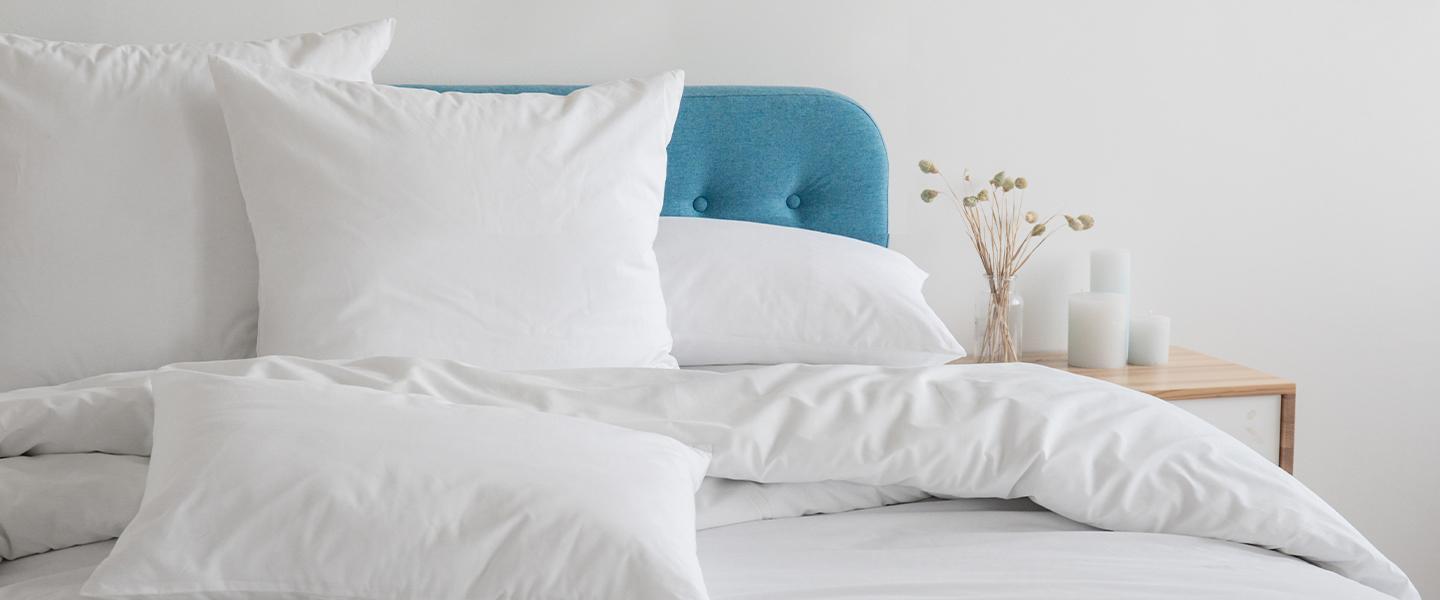Duvet Togs - The Ultimate Guide To Everything You Need To Know About Tog Ratings
If you've ever been duvet shopping, then it's likely you've come across the term "tog". But what does this actually refer to? And what duvet tog is best for your needs throughout the year?
In this comprehensive guide, we'll delve deep into the world of duvet togs. From unravelling the mystery behind tog ratings to uncovering the perfect duvet warmth for every season, we're here to equip you with the knowledge needed to get a great night's sleep every night of the year.
DUVET TOGS EXPLAINED
A duvet tog refers to how warm a duvet makes you feel when you are under it. The higher the tog rating, the warmer the duvet, and the cosier you will feel as you relax in bed. The lower the tog rating, the cooler you will feel, as the duvet will have less filling (and, therefore, retain less heat) when you're in bed.
The tog rating system measures the efficiency of the thermal insulation within the duvet. If the material is not an efficient insulator, it won't hold as much heat, meaning you'll feel cooler when underneath it in bed.
HOW IS A DUVET TOG MEASURED?
The process of measuring the tog rating of duvets involves measuring how much heat it traps per unit of surface area. Material scientists do this in controlled conditions by heating up one side of the duvet and measuring how much passes through to the other side. By monitoring this heat transfer, experts can accurately assess the duvet's thermal efficiency and insulation capabilities.
THE DIFFERENT DUVET TOG RATINGS
4.5 tog duvets fall into the low tog category. 4.5 tog duvets are perfect for warmer climates or individuals who prefer a cooler sleep experience throughout the year. For allergy sufferers, a lower tog rating is also suitable as it's lighter and easier to wash frequently, helping reduce allergens such as dust mites.
7.5 tog duvets offer an intermediary level of insulation. These duvets strike a balance for those seeking additional warmth without the heaviness of higher tog ratings, making them ideal for milder temperatures and providing a bit of extra protection from nighttime chills.
10.5 tog duvets are a step up from the 7.5 tog range. These duvets offer above-average thermal insulation, suitable for individuals who prefer to be a bit warmer in bed during cooler months without feeling too heavy.
13.5 tog duvets sit on the higher end of thermal insulation. 13.5 tog duvets provide a substantial level of warmth, ideal for cold winter months or those who enjoy a cosy, snug sleep environment.
15 tog duvets provide the highest level of warmth, making them perfect for the coldest months of the year. If you live in a house with poor insulation or find that you get especially chilly in bed, a 15 tog duvet could be the right one for you.
Alternatively, combi duvets are a great option for regulating the temperature throughout the year. These duvets are made up of two separate duvets that can be put together and easily taken apart. This can be a great option during transitional months when the weather is inconsistent.
WHAT DUVET TOG SHOULD YOU GET?
While no one can precisely determine the perfect tog rating for you, considering specific aspects can guide your decision-making process. As part of this duvet tog guide, here's what you should consider when selecting:
- Duvet weight & size: Even if you want to feel warm, you might not want to feel trapped or suffocated by the weight. What would be most comfortable for you?
- Room temperature: How warm does your bedroom normally get?
- Body temperature: How well does your body naturally regulate heat?
- Climate: Are there major shifts between summer and winter temperatures in your area?
- Sleeping arrangements: Will you be sharing your duvet or sleeping alone? If you fall under the latter category, Made for You Two duvets could be an excellent solution. These duvets tailor your warmth level while you sleep so each partner can sleep happy and more comfortable in their preferred temperature.
- Your budget: The higher the tog value, the more expensive the duvet will be. This is because you're getting more synthetic materials.
- Type of sleeper: Are you a hot or cold sleeper? Some people love keeping cool at bedtime, while others prefer to be snuggled up as warm as they possibly can - which do you prefer?
DUVET TOGS BY SEASON
As seasons shift, so do our duvet needs, requiring different ratings for optimal comfort. If you're uncertain about which tog rating suits each season best, here's a quick guide.
BEST DUVET TOG FOR SUMMER
If you tend to get quite hot and sweaty during warm summer nights, then a low tog rating of 4.5 is probably the best summer bedding choice for these situations.
However, British weather is notoriously unpredictable, and summer nights don't always feel warm. As a result, some people might prefer to "level up" their summer duvet and choose a slightly higher tog rating, such as 7.5.
BEST DUVET TOG FOR WINTER
Unless you want to turn into a frosty snowman, investing in good quality winter bedding is a good idea. But what tog rating should you choose?
Some people love the idea of a heavy, well-insulated 13.5 tog duvet during winter, while others find this a little off-putting. If you are in the latter category, a 10.5 tog cover should be a good winter duvet, offering thermal insulation while not being too heavy.
BEST DUVET TOG FOR SPRING & AUTUMN
Being transitional seasons, spring and autumn temperatures aren't usually too hot or too cold. It's unlikely that you'll need a summer duvet in spring or a winter duvet in autumn.
So what new duvet tog should you get?
Well, during these seasons, a medium-rated duvet or an all-year bedding option is advisable, providing versatility for varying temperatures. Opting for a duvet within the 7.5 to 10.5 tog range offers enough protection without feeling stifling.
BEST DUVET TOG FOR ALL YEAR AROUND
For a consistent comfort level throughout the year, a mid-range tog rating serves as a good choice. A 10.5 tog duvet strikes a balance between warmth and breathability, catering well to most seasons. This tog rating offers enough insulation for cooler nights while ensuring a comfortable sleep during milder temperatures, making it a reliable all-year-round option for many sleepers.
It's also worth considering a year-round duvet for the summer months. In the summer, duvets can be removed altogether if the nights get too warm. This adaptability allows you to tailor your bedding to the changing seasons, ensuring optimal comfort throughout the year.
Wool duvets, in particular, are perfect for all-year-round use since they don’t have a tog rating. They effectively regulate temperature by wicking away moisture and allowing for better airflow, keeping you cosy without overheating during warmer nights and providing insulation in cooler weather. These duvets also maintain a consistent weight throughout the year without relying solely on thickness for warmth, making them suitable for couples with different temperature preferences.
FIND THE RIGHT DUVET FOR YOUR NEEDS WITH SLEEPSEEKER
No matter the season, duvets should always help you get a good night's sleep. We hope this duvet tog guide has given you some useful insights into how to make your bedding perfect so you can sleep soundly no matter the weather.
At Sleepseeker, we boast a wide selection of duvets, including hollowfibre, feather, and luxury variants. Explore our collection of mattress toppers, electric blankets and pillows to enhance your sleep experience.
FAQs
Is a 7.5 tog duvet warm enough for winter?
A 7.5 tog duvet might be sufficient for mild winters or if your bedroom tends to be warmer. However, in colder climates, you might find a higher tog duvet more comfortable. If you have a 7.5 tog duvet but find yourself getting too cold in bed, you could always use an electric blanket for added cosiness.
Is 10.5 tog too hot for summer duvets?
A 10.5 tog duvet might be too warm for some individuals during the summer, particularly in hotter climates or for those who are naturally warmer sleepers. Consider a lower tog duvet for cooler sleep during the summer months.
Can I use the same duvet tog rating throughout the year?
It's possible to use the same tog duvet throughout the year, but you might find that you're too cold in the winter or too warm in the summer, depending on the tog rating of your duvet. Some people prefer to have two different duvets with different tog ratings for different seasons to ensure optimal comfort year-round.
Do different fillings affect the warmth of a duvet with the same tog rating?
While two duvets may carry the same tog rating, their warmth can vary based on the filling material used. Natural fillings, such as feather or down, tend to offer a luxuriously soft feel, creating a cocoon-like warmth without necessarily needing a higher tog rating. On the other hand, synthetic fillings like polyester, although having the same tog rating, might not provide the same level of insulation due to their structure and might feel slightly less warm in comparison. Therefore, when considering duvets with different fillings but the same tog rating, it's essential to account for the insulating properties of the material used, as this significantly influences the warmth and comfort levels experienced during sleep.
Should I match the pillow tog rating to my duvet's tog rating?
Unlike duvets, pillows don't have tog ratings as they don't cover the entire body like a duvet does. Instead, focus on the pillow's material and loft to complement your duvet. For instance, if you want to match your duvet's comfort level, lightweight memory foam pillows can work well. Prioritise comfort and support when choosing pillows as well as personal preference in sleeping positions and designs rather than matching tog ratings with the duvet.
What's trending now...
-
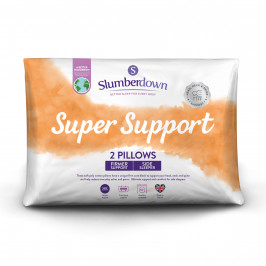
Slumberdown Super Support Firm Support Side Sleeper Pillow, 2 Pack
£17.00
Shop Now -
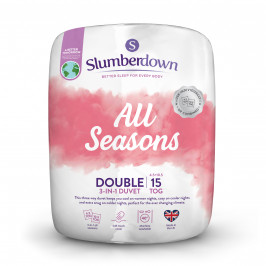
Slumberdown All Seasons Combi 15 Tog (10.5 + 4.5 Tog) Double Duvet
£30.50
Shop Now -
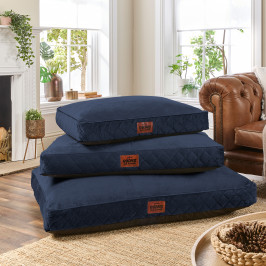
Slumberdown Paws for Slumber Navy Pet Bed, Large
£49.00
Shop Now -
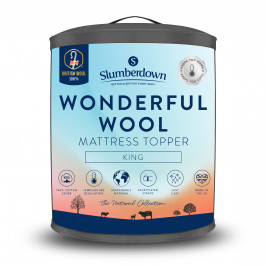
Slumberdown Wonderful Wool Mattress Topper, King
£60.00
Shop Now -
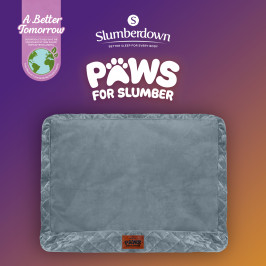
Slumberdown Paws for Slumber Extra Large Pet Bed Spare Cover, Grey
£20.00
Shop Now -
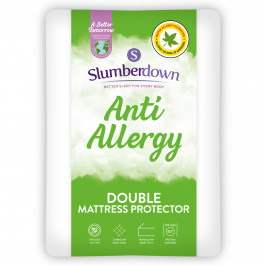
Slumberdown Anti Allergy Mattress Protector - Double
£20.50
Shop Now -
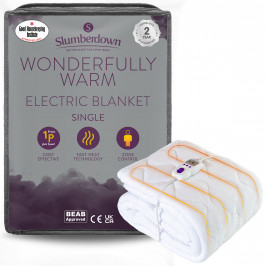
Slumberdown Wonderfully Warm Electric Blanket - Single
£60.00
Shop Now -
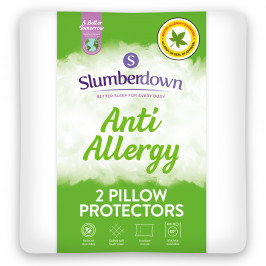
Slumberdown Anti Allergy Pillow Protector - Pack of 2
£15.50
Shop Now -
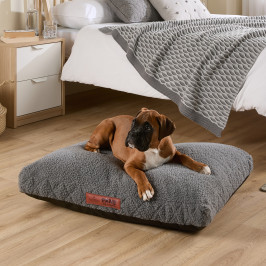
Slumberdown Paws For Slumber Sherpa Pet Bed, Medium
From: £25.00
Shop Now -
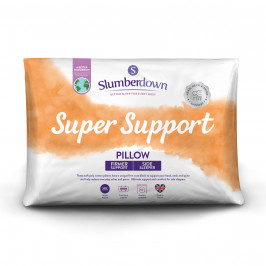
Slumberdown Super Support Firm Support Side Sleeper Pillow
From: £17.00
Shop Now -
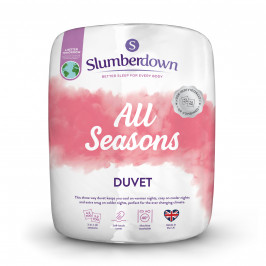
Slumberdown All Seasons Combi Duvet
From: £25.50
Shop Now -

Slumberdown Paws for Slumber Large Pet Bed
From: £49.00
Shop Now -
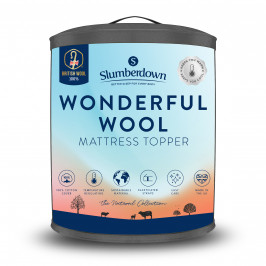
Slumberdown Wonderful Wool Mattress Topper
From: £54.50
Shop Now -

Slumberdown Paws for Slumber Extra Large Pet Bed Spare Cover
From: £20.00
Shop Now -
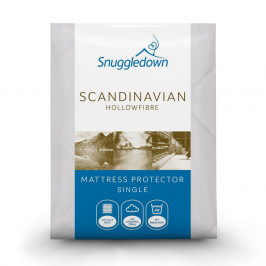
Snuggledown Scandinavian Hollowfibre Mattress Protector - Single
£14.00
Shop Now -
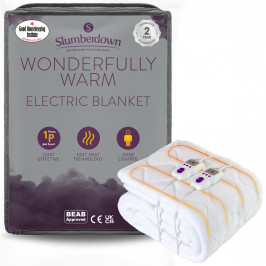
Slumberdown Wonderfully Warm Electric Blanket
From: £60.00
Shop Now -
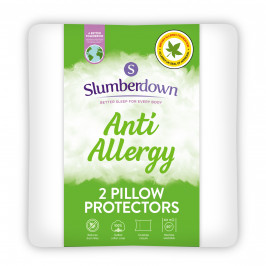
Slumberdown Anti Allergy Pillow Protector
From: £15.50
Shop Now -
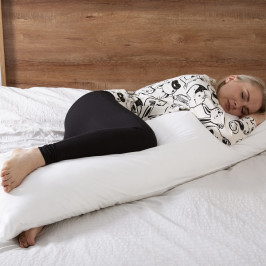
Slumberdown Body Support Pillow, 1 Pack, Includes 100% Cotton Pillow Case
£20.00
Shop Now -
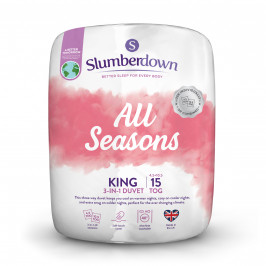
Slumberdown All Seasons Combi 15 Tog (10.5 + 4.5 Tog) King Size Duvet
£34.00
Shop Now -
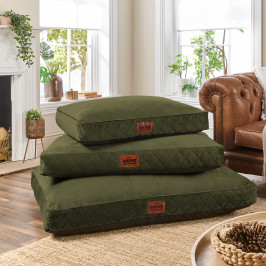
Slumberdown Paws for Slumber Olive Green Pet bed, Medium
£39.00
Shop Now -
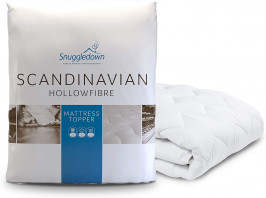
Snuggledown Scandinavian Hollowfibre Mattress Topper - Super King
£35.50
Shop Now


